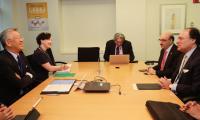The conventional consensus is that Pakistan lags behind severely in gender equality. However, one area where it has made progress is women in politics. It is one of 70 countries in the world that has had a woman prime minister or president.
Reserved seats for women testify to women being represented in numbers in parliament and the provincial assemblies. Ayesha Khan and other feminist scholars have written about Pakistan’s achievements in women’s political participation.
We are going to refer to the work of Sarah Khan on ‘Women in Electoral Politics: An Account of Exclusion’ and Sahar Shafqat’s work on ‘Opposition Parties and Regime Uncertainty in Pakistan’, 2020, in a recent book to look into the aspects of women in politics and the role of opposition that has not been discussed with so much detail with the angle of exclusion.
Sarah Khan terms reserved seats for women as a “safety valve” and does not think they have led to women being competitive in mainstream electoral politics. According to her, “Women’s low numerical representation in the electoral arena in Pakistan stems from the design of electoral institutions, the incentives of political parties, the constraints imposed by families, and gender biases among the electorate. These factors interact with each other, rather than operating independently, to produce the condition of women’s low presence in politics”.
In the 2018 general elections, the highest number of women candidates contested and yet fewer women (8) were successful on general seats in 2018 compared to 2008 (16) and 2013 (9). This shows that gradually women are becoming less competitive on general seats.
The author looks into the four ways that women can enter the electoral arena – political parties, families, electoral institutions, and voters – and then analyzes the reasons behind women’s exclusion. She also examines the “institutional solutions”, such as women’s reserved seats and more recent women’s quota as party candidates and argues that these solutions might achieve the numbers in terms of women’s representation in the electoral arena but they do not serve the purpose of women’s effective inclusion in the party system “beyond minimums”.
All political parties fielded at least five percent women candidates as per Section 206 of the Elections Act 2017 but women candidates complained that they got nominated for “uncompetitive” constituencies.
Though in 2002 tens of thousands of women joined the local government, the non-party nature of the institutional arrangements meant those women were not streamlined in the political parties’ structures.
According to Khan, “Certainly the very design of Pakistan’s quotas – reserved seats that are allotted to women through indirect election on a party basis in addition to (rather than as a proportion of) the general seats that a party has already won – reflects an unwillingness to formulate the core problem of unequal representation as one of men’s overrepresentation rather than simply women’s underrepresentation”.
Women who enter parliament on reserved seats do not generally become natural candidates for general seats due to “pervasive clientelism and patriarchal family structures”. Women lack the constituency experience, which precludes them from forming viable electoral connections to become competitive for the general seats.
This research refers to Cheema, Javid and Naseer’s work that shows electoral politics in Punjab in the last few decades being dominated by dynastic politics. Most of the successful legislators have had some family members in electoral politics prior to their own success. This pattern dims the prospects of non-dynastic candidates to win elections in Punjab.
The same dynastic politics had underwritten women’s entry in politics in the past. So much so that during the elections of 1990, 1993 and 1997, all women who were successful in securing general seats in the elections have had a family member in politics preceding them. However, this trend decreased in the elections of 2002 and 2008. This dynastic pattern is not applicable to local government elections where non-dynastic women candidates also win elections. Overall, women who belong to supportive families join electoral politics more than others.
In the other work, Sahar Shafqat is of the view that if democracy is conceptualized as “institutionalized uncertainty” then it is crucial that more than the winners, the losers of the election accept the results. Opposition parties indulge in protests as the status quo forces continue to exert pressure even when they are not in direct power and it leads to uncertainty.
“Regime uncertainty” provides reasons to political parties to indulge in extra-parliamentary means of agitation and run a sort of non-stop campaign that goes against the democratic norms and procedures. When the PML-N as the opposition party indulged in agitation in 2007 as part of the lawyers’ movement, it “helped to usher in democratic transition”. When the PTI took part in sit-in politics in 2014, it weakened democratic institutions.
The PDM has almost fizzled. The PPP is for in-house change rather than the long march. The PML-N, despite its recent flurry, has always been a pro-status quo party rather than a force of agitation. The opposition in Pakistan needs to learn from the example of Nelson Mandela and Pakistan’s own dissidents in the past who always preferred to go to jail rather than compromise. Asma Jahangir was all for going to jail for just causes. However, the PDM does not seem to have the spine that it needs to take on the status quo. Only time will tell whether the PDM strengthened democracy in Pakistan or just exposed the combined opposition’s weaknesses.
The writer is an Islamabad-based social scientist.
Email: fskcolumns@gmail.com
India uses Afghanistan as a backstage area to carry out terrorist attacks against Pakistan
Another report by the Pakistan Institute of Peace Studies states that 78 per cent of attacks have been carried out by...
Pakistan stands at the forefront of this crisis, generating a staggering 3.3 million tonnes of plastic waste annually
Today, a total of 11,000 children are attending Daanish schools in Punjab
The emotional instability of parents inculcates a range of psychological issues in children
The current way of dealing with the environment and climate change is no longer adequate







